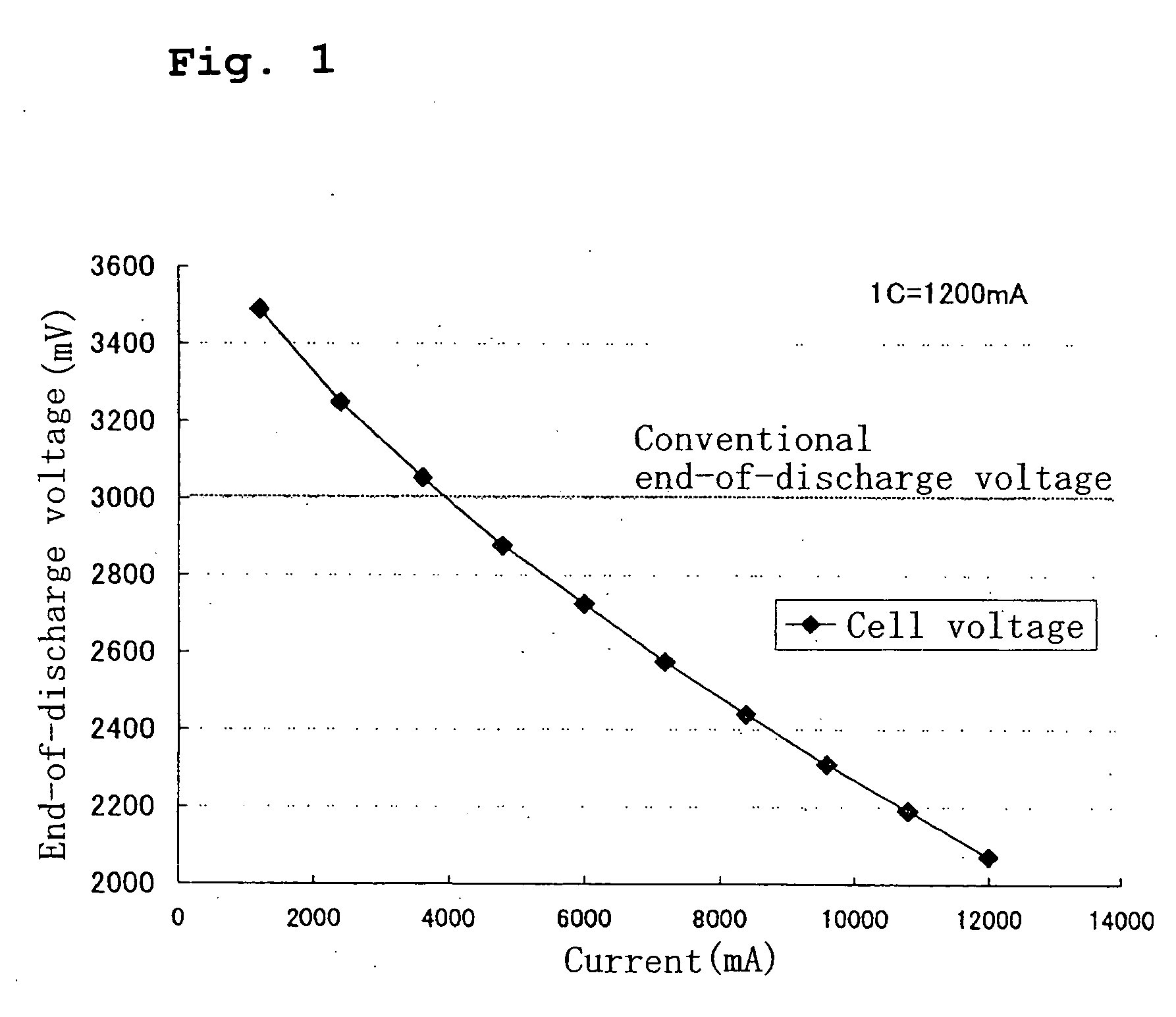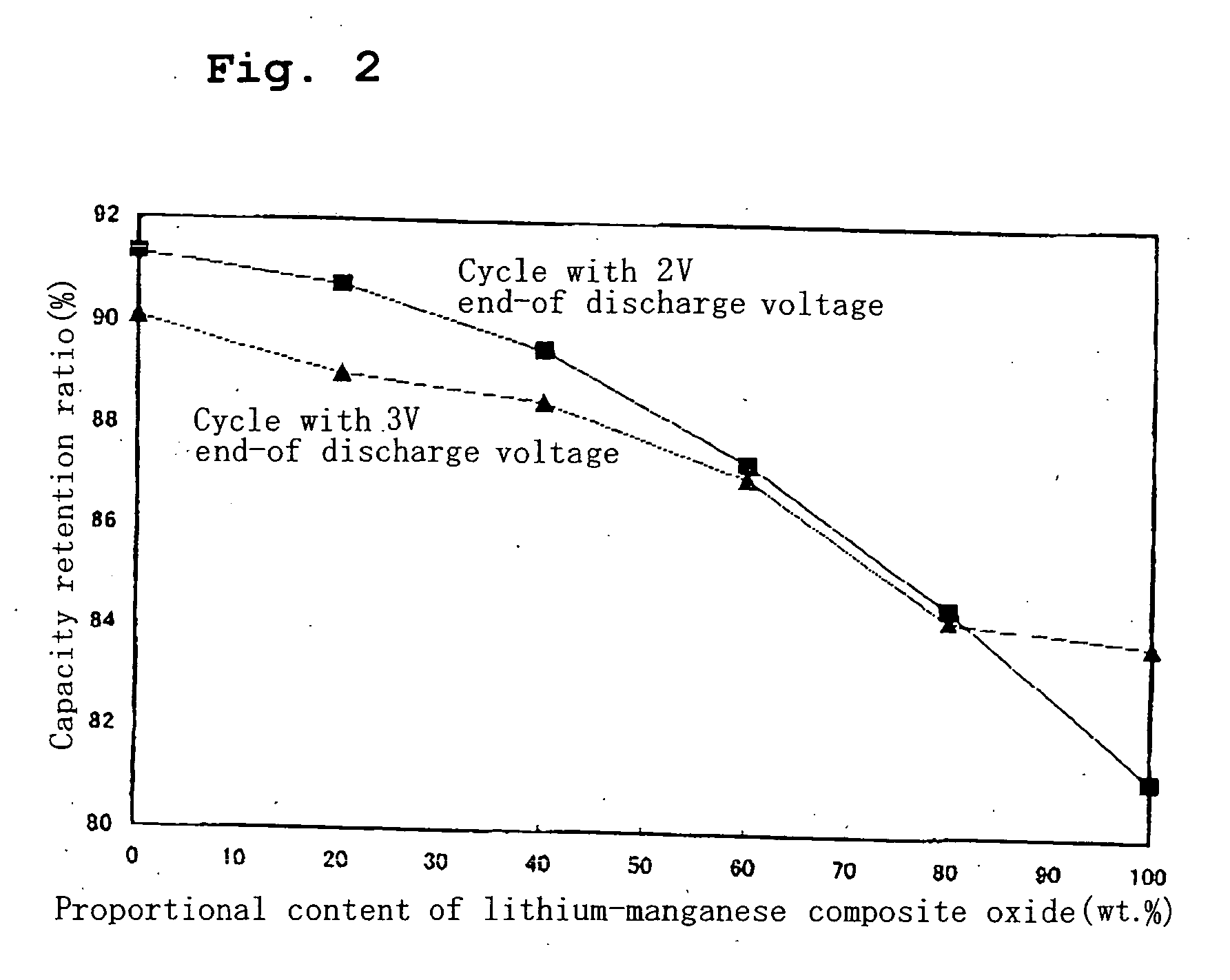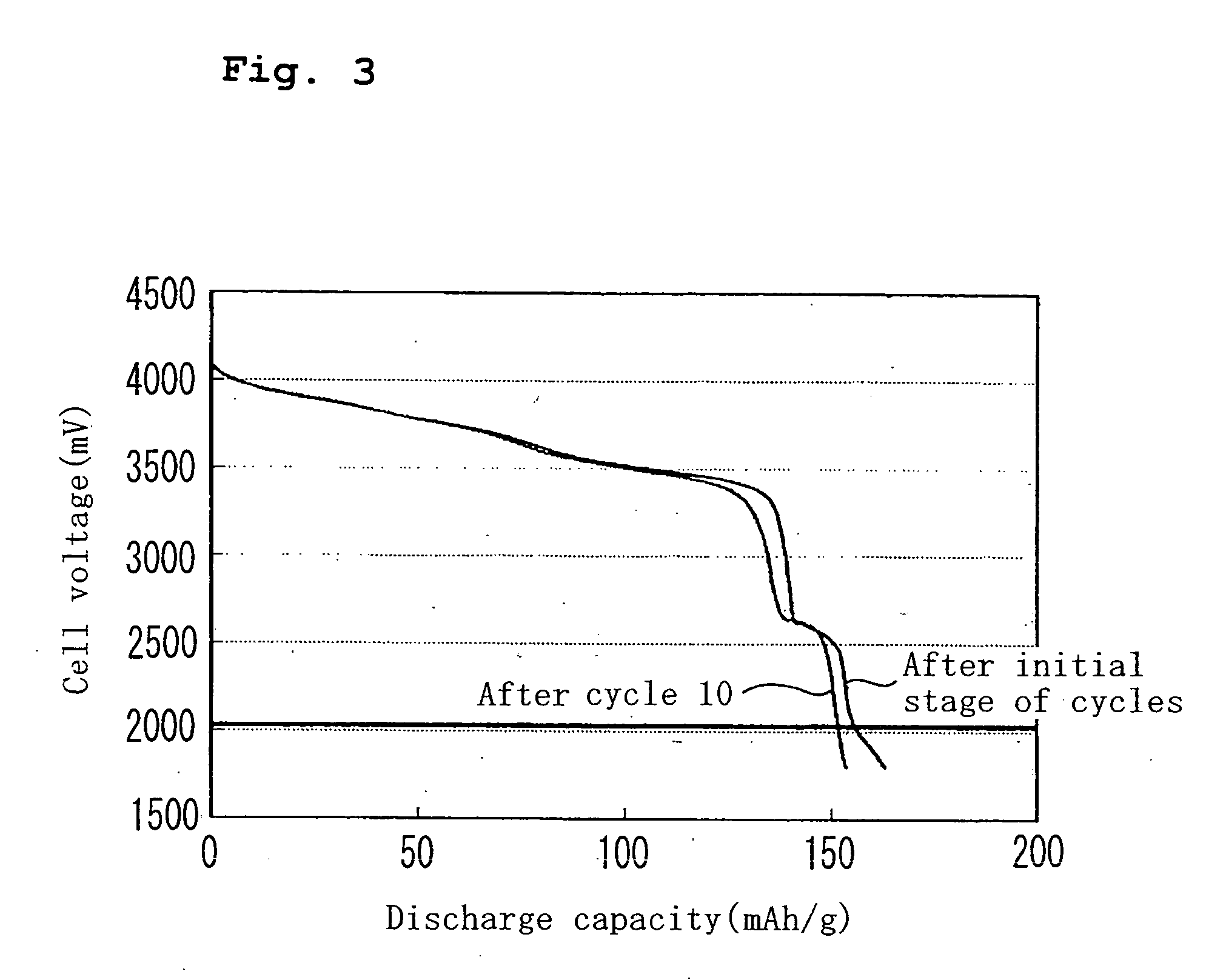Method of controlling charge and discharge of non-aqueous electrolyte secondary cell
a non-aqueous electrolyte, secondary cell technology, applied in secondary cell servicing/maintenance, cell components, cell component details, etc., can solve the problems of inability to have a large current flow, and inability to achieve high discharge power characteristics. , the effect of good cycle performan
- Summary
- Abstract
- Description
- Claims
- Application Information
AI Technical Summary
Benefits of technology
Problems solved by technology
Method used
Image
Examples
experiment 1
EXAMPLE 1
[0023] Preparation of Positive Electrode
[0024] A powder of LiNi0.4Co0.3Mn0.3O2 and a powder of LiMn2O4 were mixed as positive electrode active material so that the weight ratio (lithium-transition metal composite oxide: lithium-manganese composite oxide) became 7:3. Into the powder mixture, artificial graphite serving as a conductive agent was mixed so that the weight (powder mixture: artificial graphite) became 9:1. Thus, a positive electrode mixture was prepared. The positive electrode mixture thus prepared was mixed into a N-methyl-2-pyrrolidone (NMP) solution containing 5 weight % poly(vinylidene fluoride) (PVdF), serving as a binder, so that the solid content weight ratio (positive electrode mixture: binder) became 95:5, to prepare a slurry. The slurry was applied onto both sides of an aluminum foil having a thickness of 20 μm by doctor blading, and then vacuum dried at 150° C. for 2 hours. Thus, a positive electrode was prepared.
[0025] Preparation of Negative Elect...
example 2
[0038] Each of the tests were performed in the same manner as in Example 1 except that the end-of-discharge voltage was set at 2.5 V. The results are shown in Tables 1 and 2.
example 3
[0039] Each of the tests were performed in the same manner as in Example 1 except that the end-of-discharge voltage was set at 2.75 V. The results are shown in Tables 1 and 2.
PUM
 Login to View More
Login to View More Abstract
Description
Claims
Application Information
 Login to View More
Login to View More - R&D
- Intellectual Property
- Life Sciences
- Materials
- Tech Scout
- Unparalleled Data Quality
- Higher Quality Content
- 60% Fewer Hallucinations
Browse by: Latest US Patents, China's latest patents, Technical Efficacy Thesaurus, Application Domain, Technology Topic, Popular Technical Reports.
© 2025 PatSnap. All rights reserved.Legal|Privacy policy|Modern Slavery Act Transparency Statement|Sitemap|About US| Contact US: help@patsnap.com



